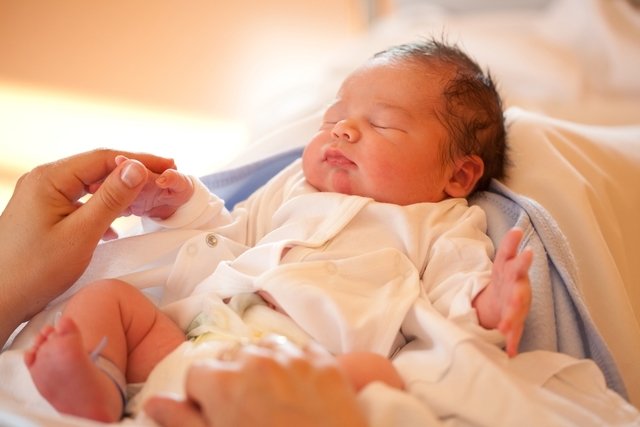The Moro reflex is an involuntary movement of the baby’s body, which is present in the first 3 months of life, and in which the arm muscles react in a protective way whenever a situation occurs that causes insecurity, such as loss of balance or when there is a sudden stimulus, for example when the baby is rocked abruptly.
Thus, this reflex is similar to the reflex that children and adults have when they feel like they are falling, and indicates that the baby’s nervous system is developing correctly.
This reflex is usually tested by the doctor shortly after birth and can be repeated several times throughout the first few pediatric visits to ensure that the nervous system is intact and developing correctly. Therefore, if the reflex is not present or if it continues throughout the second semester, it may mean that the baby has a developmental problem and the cause must be investigated.

How is the reflex test done?
The simplest way to test the Moro reflex is to hold the baby with both hands, placing one hand on the back and the other supporting the neck and head. Then, you should stop exerting force with your arms and let the baby fall 1 to 2 cm, without ever removing your hands from underneath the body, just to create a little scare.
When this happens, it is expected that the baby will first stretch his arms and then fold his arms towards his body, relaxing when he realizes that he is safe.
How long should the Moro reflex last?
Normally the Moro reflex is present until around 3 months of age, but its disappearance may take longer in some babies, as each one has a different development time. However, as it is a primitive reflex of the baby, it should not persist into the second half of life.
If the reflex persists for a long time beyond 5 months, it is important to consult your pediatrician for a new neurological assessment.
What does the lack of reflection mean?
The absence of the Moro reflex in the baby is usually related to the presence of:
- Injury to the brachial plexus nerves;
- Fracture of the clavicle or a bone in the shoulder that may be pressing on the brachial plexus;
- Intracranial hemorrhage;
- Nervous system infection;
- Brain or spinal cord malformation.
In most cases, when the reflex is absent on both sides of the body it means the baby may have a more serious problem, such as brain damage. If it is absent on just one arm, it is most likely related to changes. in the brachial plexus.
Therefore, when the Moro reflex is absent, the pediatrician will refer you to a neuropediatrician, who may order other tests, such as a shoulder X-ray or tomography, to try to identify the cause and, thus, begin the most appropriate treatment.
Bibliography
- FUTAGI, Yasuyuki et al. The grasp reflex and moro reflex in infants: hierarchy of primitive reflex responses. International Journal of Pediatrics. 2012
- A.D.A.M. Moro reflex. Disponível em: <https://ssl.adam.com/content.aspx?productId=125&pid=69&gid=003293&site=bestdoctors.adam.com&login=BEST4545>. Acesso em 07 nov 2019
- EDWARDS, Christopher W.; KHALILI, Yasir A.. Moro Reflex. StatPearls Publishing LLC. 2019

Sign up for our newsletter and stay up to date with exclusive news
that can transform your routine!
Warning: Undefined array key "title" in /home/storelat/public_html/wp-content/plugins/link-whisper-premium/templates/frontend/related-posts.php on line 12
Warning: Undefined array key "title_tag" in /home/storelat/public_html/wp-content/plugins/link-whisper-premium/templates/frontend/related-posts.php on line 13




